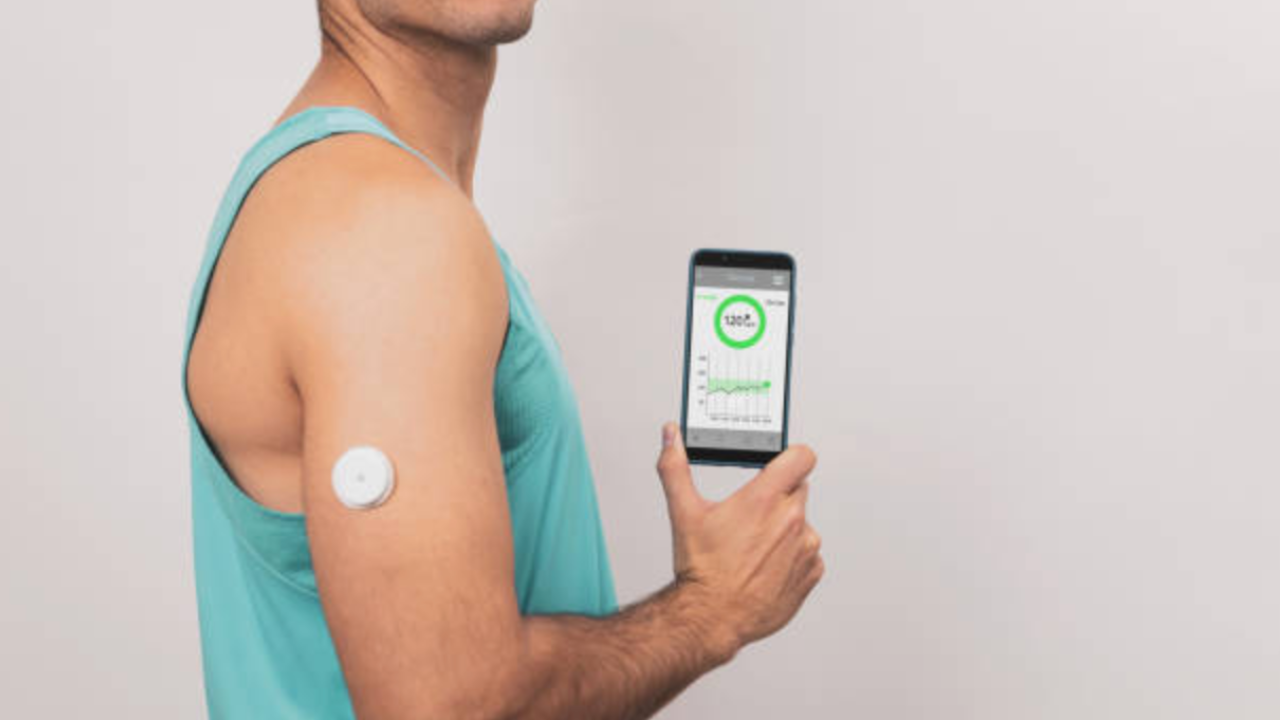Ways to Manage Diabetes Like a Pro

Living with diabetes can sometimes feel overwhelming, but small changes can make a big difference.
Whether you have Type 1 diabetes (T1D) or Type 2 diabetes (T2D), working with a registered dietitian and certified diabetes educator can help you find the best strategies for your lifestyle. Here are four essential tips to improve your insulin sensitivity and help keep your blood sugar levels in check.
1. Move Your Body Regularly
Staying active is crucial for everyone, especially for those with diabetes. Exercise helps your body use insulin more effectively, making it easier to control blood sugar levels. When you move, your cells become better at taking up glucose, which can lead to more stable blood sugar readings. Whether walking, dancing, or playing sports, find an activity you enjoy and stick with it. A T1D dietitian or T2D dietitian can suggest tailored exercise plans to fit your needs.
2. Prioritize Quality Sleep
Did you know that sleep affects your blood sugar? When you don’t...
Optimizing Your Exercise with the Help of a Diabetes Educator

If you're living with diabetes, whether it's Type 1 (T1D) or Type 2 (T2D), you know that managing blood sugar levels is key to staying healthy.
One often overlooked area of diabetes management is how exercise affects blood sugar levels, and unfortunately, your diabetes care team may not always give you the best advice. As a result, your workouts may feel harder, and you may struggle with blood sugar fluctuations. Fortunately, as a diabetes dietitian, I’m here to help you navigate exercise and nutrition for better blood sugar control and improved fitness outcomes.
Why Your Care Team Might Not Have the Best Advice
Your Type 1 diabetes dietitian or T2D dietitian might suggest a one-size-fits-all approach to exercise, treating cardio and strength training the same. However, different types of physical activity affect your blood sugar in unique ways. For example, cardio exercise like jogging or hiking often lowers blood sugar, while intense activities like weightlifting or sprinting can ...
Carb Dosing for Croque Madame: Diabetes Educator’s Insight

Managing diabetes is not just about monitoring blood sugar levels; it's about making informed food choices and understanding how they affect glucose levels.
Whether managing Type 1 diabetes (T1D) or Type 2 diabetes (T2D), the expertise of a diabetes dietitian is essential in creating a balanced meal plan that supports overall health. By working with a T1D or T2D dietitian, individuals can better understand how different foods impact blood sugar, allowing them to enjoy meals without compromising their health.
New Food Adventure
Croque Madame, is a French sandwich made with bread, egg, cheese, ham, and mayo. While it may seem indulgent, for individuals with Type 1 diabetes (T1D) or Type 2 diabetes (T2D), it’s important to assess its carbohydrate content and how it will impact blood sugar levels. When traveling or trying new foods, working with a T1D dietitian or T2D dietitian can help individuals understand how unfamiliar meals might affect glucose levels. A diabetes dietitian ensures...
T1D Dietitian Hikes While Managing Blood Sugar Levels

Hiking while managing diabetes can seem daunting, but with the right planning and preparation, it becomes much easier.
A registered dietitian and certified diabetes educator can help guide individuals with Type 1 or Type 2 diabetes to achieve balance during physical activities like hiking. Explore the steps the T1D dietitian took to hike while keeping blood sugars in check.
1. Start with a Balanced Breakfast
According to Ben, ensuring the right breakfast is the first step in preparing for a hike. A good combination of protein and carbohydrates is essential for quick energy while sustaining blood sugars throughout the hike. This balance helps keep the body fueled while preventing spikes or crashes in glucose levels during physical activity.
2. Monitor Insulin Levels
Before embarking on the hike, the diabetes educator ensures that insulin on board is kept on the lower side. This step is crucial in preventing hypoglycemia (low blood sugar) during the hike. Proper insulin management i...
Enjoy Sweet Treats While Managing Blood Sugar: T1D Dietitian Guide

Living with diabetes, whether it’s type 1 or type 2, doesn’t mean giving up on favorite treats.
A certified diabetes educator and registered dietitian living with Type 1 diabetes (T1D) for over 25 years offers guidance on how to enjoy a milkshake without blood sugar levels spiking. Many individuals with diabetes are told to avoid desserts like cakes, cookies, and milkshakes, but it’s time to rethink that advice.
Myths Around Sweets and Diabetes
For years, individuals with diabetes have been warned to avoid sugary foods. Milkshakes, in particular, are often seen as a no-go because of their high sugar content. However, it’s important to break it down: while milkshakes are high in sugar and fat, causing an immediate spike in blood sugar, this doesn’t mean they must be entirely off-limits. A T1D dietitian emphasizes the importance of understanding how the body responds to such foods and making the right adjustments.
The issue with sugary foods is their potential to cause a sharp rise i...
Low-Carb Snacks and Blood Sugar: T1D Dietitian’s Advice

Managing Type 1 diabetes or Type 2 diabetes can be challenging, especially when it comes to choosing the right foods.
Many people with diabetes are drawn to low-carb or keto diets to help maintain stable blood sugar levels. However, not all “low-carb” snacks are created equal, and some can cause unexpected spikes in blood sugar. Here’s a story that illustrates this important point.
The Snack That Wasn't What It Seemed
A patient with Type 1 diabetes decided to try a new snack marketed as low-carb and keto-friendly. The snack seemed like the perfect choice, as it was labeled with fiber and low in carbs. At first, the individual’s blood sugar started at a reasonable level, but not long after eating the snack, the blood sugar suddenly spiked significantly, causing concern. This rapid increase in blood sugar was unexpected, especially given the snack's “low-carb” claims.
Why This Happens
This is a common issue for people with diabetes who rely on processed foods labeled as "low-carb." ...
Inhalable Insulin: A New Tool for Managing Blood Sugar

Managing blood sugar levels is one of the most important parts of living with diabetes, whether it’s Type 1 diabetes (T1D) or Type 2 diabetes (T2D).
Every person living with diabetes has unique challenges, and finding effective ways to manage blood sugar can make a big difference in overall health. One tool that is becoming increasingly popular for managing high blood sugar is Afrezza, an inhalable insulin that may offer a faster and more convenient option than traditional insulin methods.
What is Afrezza?
Afrezza is a fast-acting, inhalable insulin used by some people living with Type 1 diabetes or Type 2 diabetes. It is designed to be an alternative to the more traditional methods of insulin delivery, such as injections or insulin pumps. Instead of injecting insulin or using a pump, the user inhales the insulin directly into their lungs through a small device. Once inhaled, the insulin is absorbed into the bloodstream, helping to lower blood sugar levels quickly.
Many individuals...
Greek Feast Dosing Made Easy: Diabetes Educator’s Insights

Eating delicious food while managing blood sugar levels is possible with the right guidance.
A diabetes dietitian with expertise in managing type 1 diabetes (T1D) and type 2 diabetes (T2D) can help individuals make informed food choices that maintain stable blood sugar levels. Whether living with T1D or T2D, a type 1 diabetes dietitian or type 2 diabetes dietitian can offer practical tips to help individuals enjoy flavorful meals without worry.
Managing Blood Sugar with a Greek Feast
A traditional Greek feast offers a variety of delicious and nutritious foods, but it’s important to manage the carbs, fats, and proteins in the meal to keep blood sugar levels in range. Here’s a breakdown of how to manage insulin and count carbs during a Greek meal.
The Greek Salad
A Greek salad is an excellent start to a healthy meal. It contains ingredients like dried tomatoes, bread, cucumbers, peppers, and tomatoes. While dried tomatoes and bread add carbs, cucumbers, peppers, and tomatoes are mos...
Enjoy Nachos Guilt-Free: Expert Tips from a Diabetes Educator

Living with diabetes doesn’t mean you have to give up the foods you love.
In fact, with the right guidance from a diabetes dietitian, managing blood sugar while still enjoying delicious meals is not only possible but can become a key part of living a healthy and fulfilling life. Whether you're dealing with Type 1 diabetes (T1D) or Type 2 diabetes (T2D), working with a T1D dietitian or T2D dietitian can make all the difference when it comes to navigating your meals.
One common challenge for people with diabetes is managing their blood sugar while enjoying foods that may seem off-limits like a plate of nachos loaded with kettle-cooked chips, sour cream, cheese, ground beef, pulled pork, and beans. At first glance, this meal might seem like a recipe for disaster, especially for those concerned about their blood sugar levels. However, with the expertise of a diabetes educator, people with diabetes can learn how to enjoy these meals while still keeping their blood sugars in check.
Import...
Tips for Blood Sugar Control This Holiday

Managing blood sugar levels can be especially tricky when food and celebrations are abundant during the holidays.
For people with diabetes, the stress of managing meals and insulin can turn what should be a joyful time into a challenging experience. However, one simple strategy can make a big difference: exercise. Whether you have Type 1 diabetes (T1D) or Type 2 diabetes (T2D), regular physical activity can help keep blood sugar levels in check, even after indulging in holiday meals.
The Power of Exercise for Blood Sugar Control
For those with diabetes, exercise has a powerful effect on insulin sensitivity. Insulin sensitivity refers to how effectively the body uses insulin to process blood sugar. The more sensitive the body is to insulin, the easier it is to stabilize blood sugar levels. When someone with diabetes exercises, their muscles become better at absorbing glucose, which can help lower blood sugar levels naturally.
A Type 1 diabetes dietitian or Type 2 diabetes dietitian ...

